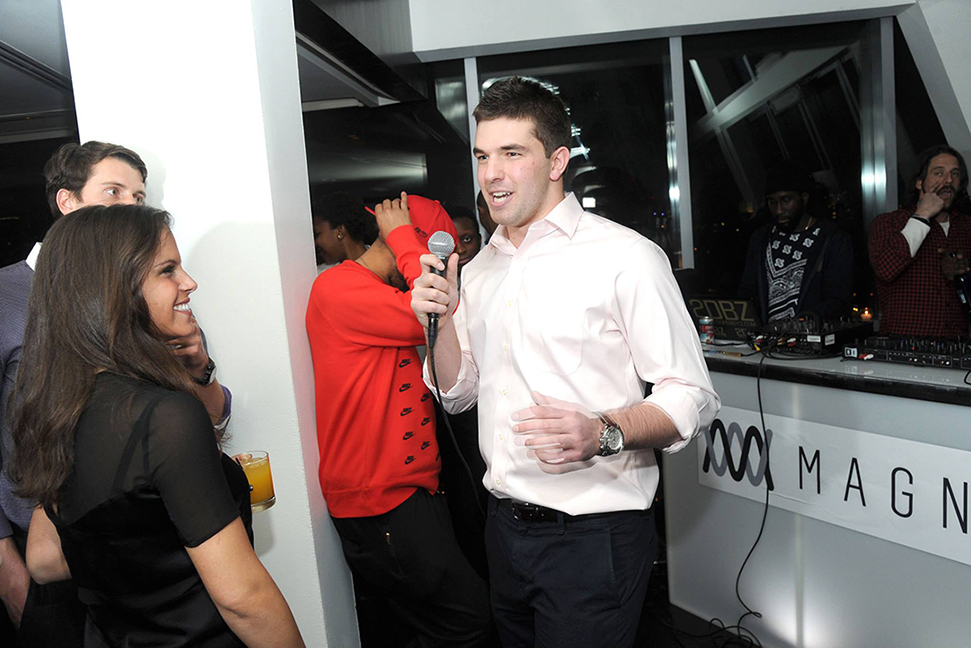Beyond the car crash spectacle of the Fyre festival, both films offer variations on a cautionary tale that begs a rethink of some of the most voguish ideas about marketing and entrepreneurship.
First though, the facts. Both documentaries sketch out a story that goes something like this: ambitious start-up company promises luxurious and exclusive new music/lifestyle event on a tropical island, people buy expensive tickets en masse, people jet out to the festival only to find a Lord of the Flies situation instead of a music festival, people laugh at it on social media, founder of festival is convicted of fraud.
The seeds for disaster seem to have been sown early; the whole elaborate island festival was actually designed to attract attention to the now-forgotten Fyre app, which billed itself as a kind of Uber for entertainment booking. Breakthrough businesses are often the product of laser focus. Fyre was a side project from the start, albeit one shaped by hubris and a vaunting but completely empty ambition.
What really propelled the festival to international attention was its slick, star-studded marketing trailer.
It was full of high-cheekboned models, photogenic stretches of Caribbean beach and impenetrable marketing speak (the festival exists “on the boundaries of the impossible” apparently). The highfalutin voiceover even incorporated the awestruck words of space tourist Anousheh Ansari into what was an undeniably appealing but pretentious and borderline incomprehensible package.
A suitably breathless report in Bravo TV noted “a gaggle of supermodels” had flown to the Bahamas to shoot the ad, an event faithfully documented in high definition but enigmatic Instagram footage. “While it looked like pretty much the best, most jealousy-inspiring trip ever, it wasn’t exactly clear what the women were all doing there together,” the report pondered.
This early account almost doubled as an unintended articulation of the mission statement of Fyre: make sure people are paying attention, don’t worry if it’s completely unclear what they’re looking at. Still, McFarland and company were able to leverage the buzz into venture capital injections to keep the whole crazy dream afloat despite their plans having already fallen into laughable disarray. The fact that his team had never vaguely pulled off anything on the scale of Fyre before was treated as an irrelevance. In fact, their insistence that they wanted to do something unprecedented and wildly ambitious was used as a selling point.
As one talking head in Fyre Fraud tells it, Billy McFarland and his cronies “weaponised social media”. Their next bold gambit was to get a group of Instagram influencer models to post an orange tile with the festival’s hashtag. The likes and regrams flowed in. Again, they had made virtues of exclusivity and mystery and constructed a shiny, sun-kissed facade that hid the alarming logistical and financial disaster their planned festival had turned into.
https://www.youtube.com/watch?v=ljkaq_he-BU
Being a social media influencer can be highly lucrative, but it’s difficult to watch Fyre without wondering what the connection between supermodels posting orange squares and a music festival gaining instant credibility is. Social media influencers were the newest, buzziest trend in marketing, but they seem to have accumulated massive clout while operating in a nascent, completely underregulated industry.
As the festival draws near, both documentaries recount how various whistleblowers, sceptics and actual sensible adults began to sound the alert on the dangerously low levels of preparation in place. None of them were able to compete with Fyre’s well-resourced and canny marketing, however.
Fyre won the social media war but eventually, it had to collide with reality, and the crash was spectacular.
Festivalgoers jetted to the island only to find that bands had pulled out and the promised luxury accommodation was actually a pathetic cluster of disaster relief tents. The gourmet food gushed over in promotional material was just the world’s most unappealing looking cheese sandwich. The festival’s status as one of the most infamous failures in recent memory was secured mere hours after it ‘opened’.
Even though both films effectively telegraph the looming disaster, the footage of the chaotic cancelled ‘event’ is still shocking. Everyone seems shellshocked as they talk to the filmmakers months later. Everyone that is, except McFarland. Perhaps the most striking moment in either documentary comes in Fyre Fraud when he smugly challenges the interviewers to name one time he has been caught out in a lie. As the filmmakers methodically list his scores of broken promises, McFarland stares dumbly into the mid-distance, unable to comprehend how badly he has been caught out.
It’s a moment consistent with McFarland’s appalling post-Fyre behaviour. On his return to New York and with criminal charges hanging over him, he hired a film crew to document his jet-set lifestyle and attempts to fast-talk his way into people’s wallets (including, outrageously, those on the mailing list of his failed festival) with a scam involving the promise of VIP access to star-studded events. The whole episode is classic McFarland, encapsulating his belief that balance sheets, logistics and laws are essentially irrelevant in the face of some really sweet Instagram content.
Here is a man enabled by a system built on artifice, a slickster who believed himself to always be the smartest person in the room. By the time he finally figured out this was a deluded belief, the room was a courtroom and a judge was sentencing him to six years in prison.
In a post-Fyre world, marketers and influencers continue to play up the mystique, exclusivity and glamour of a commodity and there is no doubt this can be done in a creative and even artful way, helping a product connect with consumers in a crowded marketplace. McFarland’s botched festival, however, stands as an example of what happens when the art of selling completely overtakes what is being sold. His grandiose failure ended up being all fantastical concept and no real-world execution, all smoke and no fyre.
Ultimately, Fyre will live on in infamy as the most perfectly stupid event of the Instagram era, a festival so exclusive that nobody could attend because it didn’t exist.







